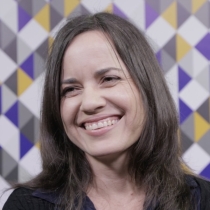View the Fellows' Stories (2014 class)
Descriptions of the 2014 Fellows' stories appear below:
Sam Harnett explored the reasons that Japan’s population is joining protest movements; met with Jun Hori, a Japanese journalist who says he was restricted in reporting on the Fukushima disaster; reported on residents who still have concerns over contamination near the Fukushima-Daiichi nuclear reactors; and researched how the local economy of towns near Fukushima now cater to clean-up crews. Harnett plans on producing one last piece on the English translation of Doraemon, a Japanese manga, or comic, series.
While in Japan, Hannah Northey was able to write about TEPCO’s plans to build the world’s most efficient coal plant; the struggles of towns to repopulate after the Fukushima-Daiichi disaster; and the increased need for U.S.-exported natural gas in the wake of nuclear power plant closures.
Andrea Appleton wrote for Al Jazeera America about how Fukushima is trying to bring tourists back in the wake of the nuclear disaster. It focuses on a small insect-themed amusement park, Mushi Mushi Land, in Tamura City. The park was closed after the disaster due to radiation fears and has only partly reopened. Appleton produced a story for Aeon Magazine about why insects are so beloved in Japan and why they tend to be feared and disliked in Western cultures.
Andy Curliss was able to write numerous articles connecting Japan and North Carolina. For four of his stories, he focused on economic ties between the two. One story was about the North Carolina commerce secretary’s visit to Japan in an effort to attract Japanese companies to North Carolina, adding jobs to the state. Another was about North Carolina assembling sites for potential major auto plants. Curliss wrote a story about Japanese candy company Morinaga building a plant to manufacture Hi-Chew candy in Orange County, NC. Curliss also wrote a series of stories called “High on the Hog,” about pork produced in North Carolina that is exported to Japan. The series includes four stories, videos (one and two), and a timeline of pork production. Curliss also wrote two feature stories: one about a former North Carolina baseball player who is famous in Japan, and another about a family who lost a son and climbed Mt. Fuji in his honor.
Rob Hotakainen focused most of his reporting on trade, which ran as a series called “A Yen to Trade.” His first story in the series focused on the dearth of American cars sold in Japan and how that may derail Obama’s proposed Trans-Pacific Partnership. The second story was about Japan’s increasing need to import American beef products, including cow tongue. His next story in the series focused on Washington state’s export of fur to Japan, and how the demand for the product is slowing. The fourth story also focused on Washington state and how its wine is quickly replacing sake as the drink of choice in Japan. The final story in the series was about Japan’s need to import energy sources, like natural gas, from the United States following the Fukushima nuclear disaster.

